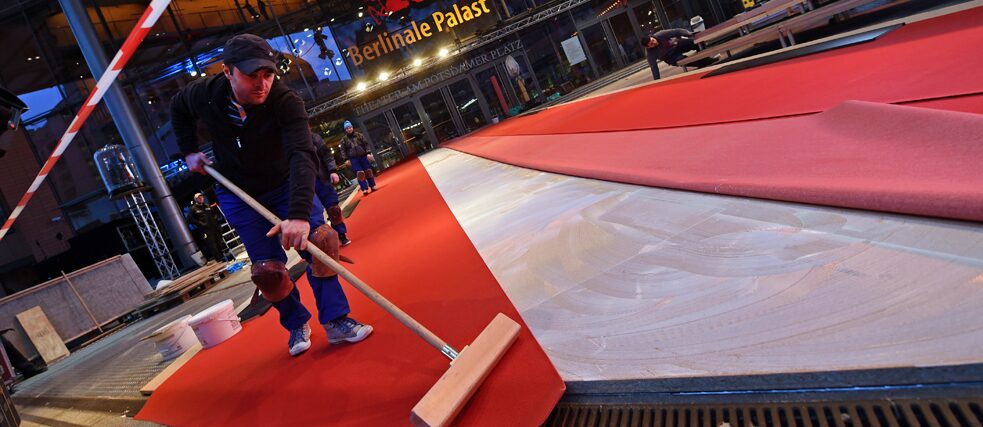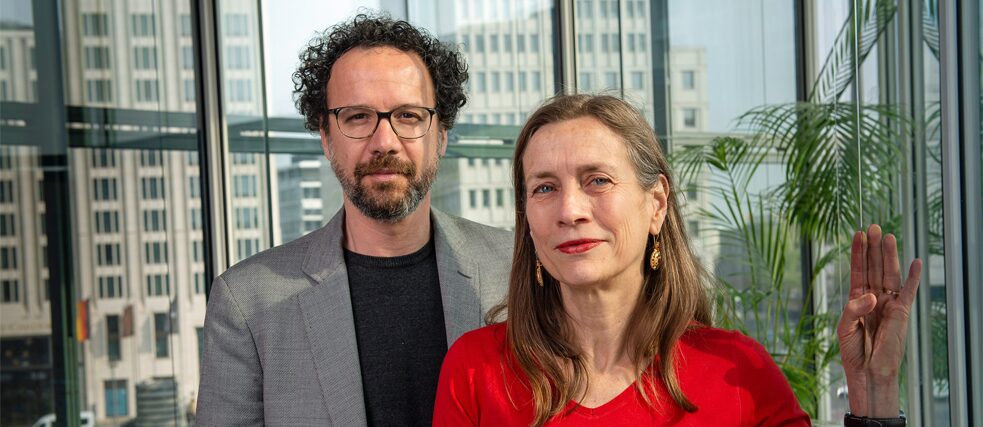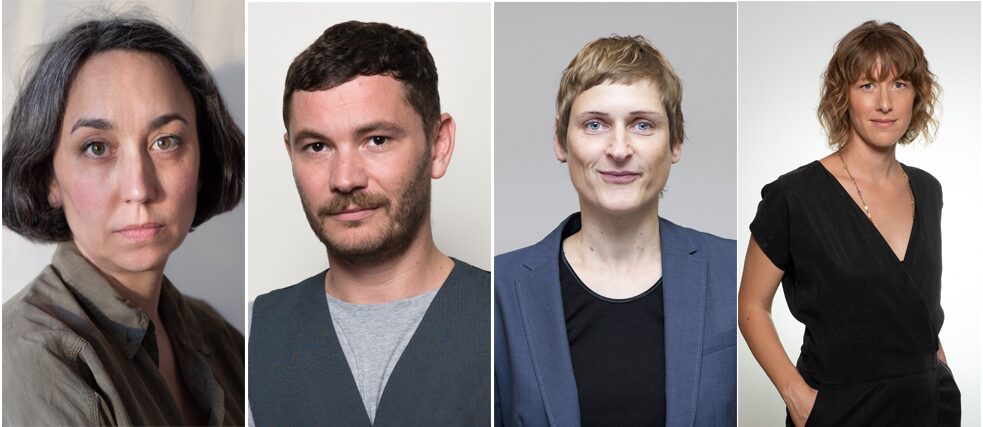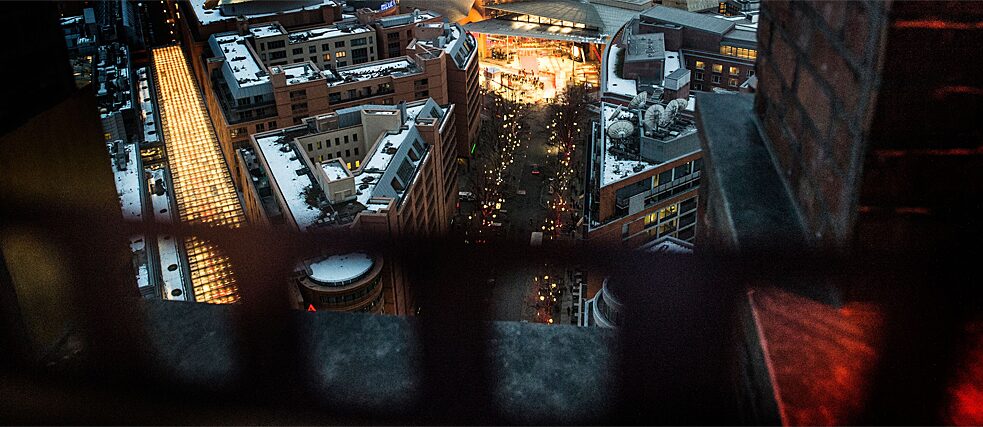Berlinale 2020
Winds of change and fresh faces at Potsdamer Platz

Red Carpet in front of the Berlinale Palace | Photo (detail): © dpa/Jens Kalaene
Some big changes are coming to Germany's biggest and biggest-name film festival this year. Here’s the lowdown on what’s new at the Berlinale 2020.
 Carlo Chatrian, Mariette Rissenbeek, Berlinale Directors 2020 | Photo (detail): © Alexander Janetzko/Berlinale 2019
Carlo Chatrian, Mariette Rissenbeek, Berlinale Directors 2020 | Photo (detail): © Alexander Janetzko/Berlinale 2019
This passionate cineaste and film critic is ideally suited for the job, having brought widely acclaimed retrospectives and cutting-edge art house cinema to the Locarno festival. But both Chatrian and Rissenbeek have to manage the tricky balancing act of showcasing innovative films whilst drawing big crowds to the festival in Berlin.
Competition: streamlined
Carlo Chatrian, the curator of the main section, has already pushed through one important change: in future, only films that are actually vying for the Golden or Silver Bears will be screened in competition. So the Out of Competition subcategory, which had always struck him as “a contradiction in terms” anyway, will be scrapped. The problem is it is precisely these movies that have often brought international superstars to the Berlinale red carpet in the past, including the likes of Catherine Deneuve, Tom Hanks, Diane Kruger and other darlings of the public. Chatrian doesn’t want to forego such celebrities in future. Among others Javier Bardem, Sigourney Weaver, Johnny Depp, Cate Blanchett are expected. But the focus and priority is now on the films themselves: “The Berlinale”, he insists, “is not a glamour machine.”Innovation: Encounters
On the other hand, the 2020 edition will be adding a new section to the main competition: Encounters is to showcase “aesthetically and formally unusual works by independent filmmakers”. The opening Encounter will be Malmkrog, a film by Romanian auteur Cristi Puiu about five aristocratic friends who spend Christmas in a country manor house. All told, the programme comprises 15 features and documentaries, including German filmmaker Melanie Waelde’s debut Nackte Tiere (English title: Naked Animals), US director Josephine Decker’s Shirley, and Isabella by the Argentine Matías Piñeiro.This newly-launched second competition for remarkable films d’auteur is the Berlinale’s answer to long-established counterparts in Cannes (Un Certain Regard) and Venice (Orrizonti). We can look forward to seeing how it differs from the likewise innovative Forum and the traditional Competition, which also features some exceptional art house cinema.
Selection committee: international
A new procedure was used to pick the 18 pictures in this year's competition.The entries to the main competition will be selected according to a new procedure in 2020. Instead of individual “scouts” responsible for a single country or region, the selection will be handled by an international committee. Chatrian has appointed seven members to the selection committee, which will be chaired by his past and present head of programming Mark Peranson. Chatrian has also brought Sergio Fant, Lorenzo Esposito and Aurélie Godet from Locarno to Berlin. Verena von Stackelberg and Barbara Wurm are still on the committee: the former is, among other things, the founder and managing director of the Wolf Kino in Berlin, which opened in 2017; the latter is a film critic, scholar and key contributor to the programming of various festivals. The veteran member of the new committee is Paz Lázaro, who used to run Panorama; the current heads of the Forum and Panorama sections will no longer be members of the selection committee.Section heads: fresh faces
 New Section heads Berlinale 2020 | Photo (detail): © Berlinale, Anjula Schaub, Ali Ghandtschi, Kathrin Windhorst
New Section heads Berlinale 2020 | Photo (detail): © Berlinale, Anjula Schaub, Ali Ghandtschi, Kathrin Windhorst
Various sections of the festival have also undergone some personnel changes. Christoph Terhechte, head of the Forum for many years, left for the DOK Leipzig documentary film festival in January 2020. Cristina Nord will be taking his place. Julia Fidel is the new face of the Berlinale Series. Anna Henckel-Donnersmarck will be taking over from Maike Mia Höhne in the Berlinale Shorts section. Surprisingly, Paz Lázaro, who served as Panorama chief in 2018 and 2019, has been replaced by Michael Stütz.
Culinary Cinema: goodbye
Dieter Kosslick’s pet project Culinary Cinema, featuring a film about food followed by a gourmet meal, has now been scrapped. The NATIVe series, launched in 2013, is also a thing of the past. The festival will continue to screen pictures by indigenous filmmakers, though not in a separate series. This is another small way in which Chatrian and Rissenbeek have streamlined the festival, getting rid of two sections and adding a new one (Encounters). And yet, with 13 instead of 14 sections, the Berlinale still has twice as many categories as the Cannes and Venice festivals. And yet this year’s line-up has been trimmed to more manageable proportions: 340 films are to be shown in 2020, which is 60 fewer than last year’s programme.Potsdamer Platz feeling: building site
 The Berlinale Palast at the Potsdamer Platz | Photo (detail): © Jan Windszus/Berlinale 2013
The Berlinale Palast at the Potsdamer Platz | Photo (detail): © Jan Windszus/Berlinale 2013
Comments
Comment